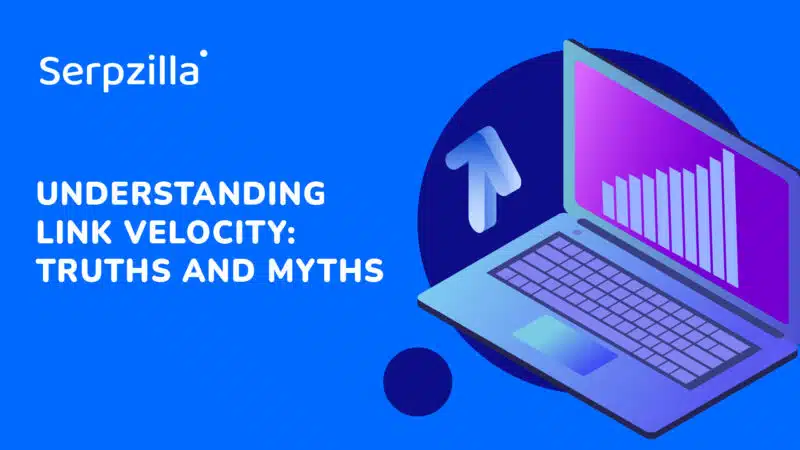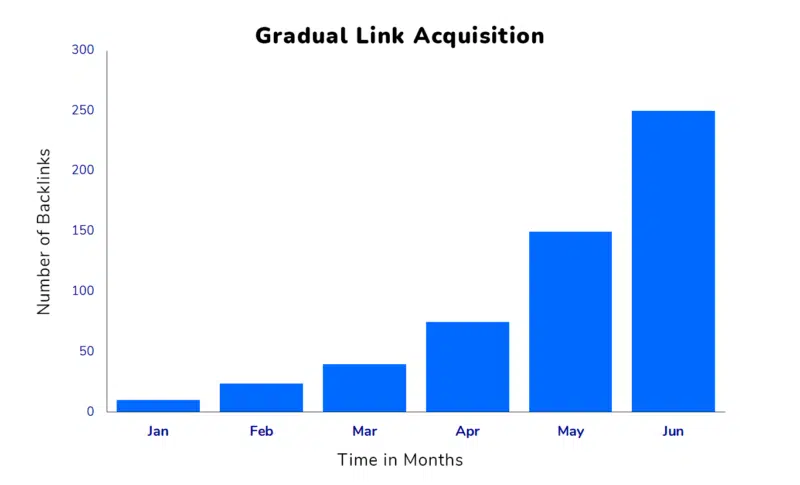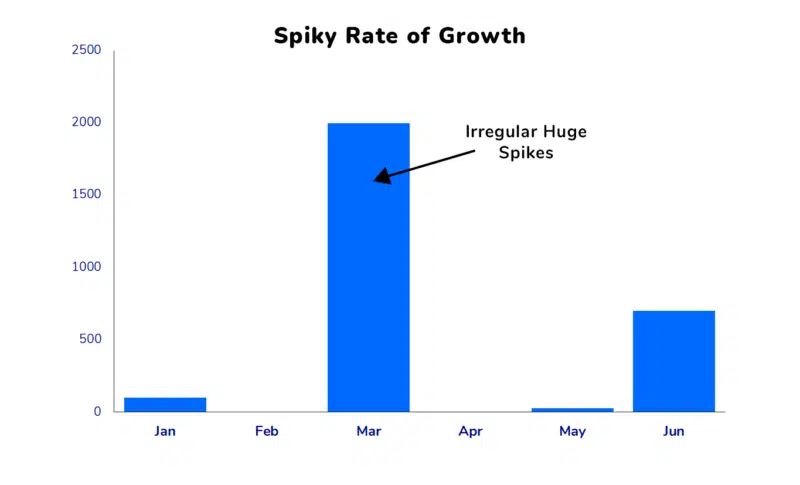Opinions expressed in this article are those of the sponsor. Search Engine Land neither confirms nor disputes any of the conclusions presented below.
Understanding link velocity: Truths and myths
Link Velocity and how it affects your SEO, mythbusting about its effects on SEO and tips about maintaining a robust backlink profile.

Achieving a higher ranking in search engine results is a common goal for website owners and SEO marketers.
However, while it’s easy to talk about, it’s much harder to accomplish – especially when it comes to link building. According to Conductor, 41% of SEO specialists consider it the hardest aspect of site optimization.
As the market becomes more competitive and users grow more skeptical, marketers must perfect their content strategies without increasing their budgets. This means doing more with less.
Backlinks remain crucial for ranking, but the methods and speed of acquiring them can greatly impact your website’s health and SEO efforts.
This article will examine link velocity. Is the speed with which you acquire backlinks a factor that affects your SEO? Should you be concerned if you had a spike one month and zero links acquired the next month?
Understanding link velocity
In simple terms, link velocity is the rate of speed at which you acquire backlinks to your website. It’s generally measured by the number of new links gained each month.
Link building has always focused on quality over quantity. There’s no specific “speed limit” for link velocity that will make Google suspicious.
For example, if a piece of your content goes viral, it can cause a sharp increase in the number of links. These links would be diverse and completely authentic, as everyone is naturally talking about it.
Google explains their stand on link velocity, or the speed with which you acquire links in detail. The mere fact of acquiring multiple backlinks over a short period of time after not having any new backlinks for a couple of years is not going to be penalized. Rather, it is about what kind of links those are and how you acquire them.
Google cares more about avoiding manipulative tactics to acquire backlinks, such as buying link bundles or randomly posting irrelevant links in forums.
Google does not specify what it considers a healthy link velocity. Instead, its algorithms check if a sudden influx of backlinks comes from suspicious sources, to determine if they might be manipulated. Therefore, it’s important to ensure that your link acquisition is natural and balanced.
Can you actually over-optimize?
The short and straight answer is a definite yes. Over-optimization occurs when backlinks are acquired inorganically, without regard for quality or relevance.
The desire for quick results can lead you to fall prey to link building tactics like buying links, link exchanges, or automated comment spam.
The consequences of over-optimization can be quite tangible.
- Google penalties: If Google tags your site’s backlink profile as unnatural and manipulated, you can face penalties that significantly impact your website’s rankings.
- Waste of resources without a result: Any benefits of low-quality backlinks, whether you obtain them or create them yourself, are usually short-lived. At best, the money spent on them is wasted because Google often ignores suspicious backlinks in its rankings. They do little for your website’s long-term authority, traffic growth, or SERP results. In contrast, organic backlinks last much longer and continue to drive traffic and brand recognition over time.
In short, a link building campaign should be seen as a marathon, not a sprint. It requires time, smart resource distribution and a systematic approach. You can’t win a marathon – or search rankings – with sporadic effort.
The speed at which you gain links is less important than the methods you use to acquire them.
The argument about the importance of link velocity stems from Google’s old mentions of “spiky rate of growth.” The key word, however, is “old.”
The pictures below demonstrate what is usually considered “gradual” link velocity and the said spiky growth. That being said, neither scenario today would be considered problematic by Google.


Do you need to monitor your link velocity?
Yes and no. Many companies don’t worry about link velocity.
It’s still useful to monitor changes in link velocity because it can show how well your SEO tactics are working.
No SEO strategy can guarantee a spot on Google’s first page, but considering your link velocity as part of your overall SEO metrics (e.g., Domain Authority, Domain Rank, traffic stats) can be beneficial.
Tools like Serpzilla can help you perform extensive backlink analysis, showing you how your backlinks are gained and how they are performing. Serpzilla can:
- Offer extensive backlink profile statistics to help analyze your performance.
- Navigate a wide selection of websites that invite guest bloggers and create a pool of sources in your niche where you can guest blog.
- Sort and filter guest blogging prospects by various factors to help you find the most suitable ones that align with your overall SEO strategy.
- Use automated outreach instruments to streamline and speed up your outreach campaign.
Building backlinks safely: Striking the right balance
If you want your link building tactics to add to and multiply SEO success, consider these best practices:
- Prioritize quality: Focus on securing backlinks from high-authority, relevant sites within your industry
- Improve your content: Creating link-worthy content is one of the most effective ways to attract backlinks. Review your content strategy and see if it works. For example: What and Why posts usually attract 25.8% more links than How-to posts.
- Use nofollow attributes for paid links: Advertising is a widespread practice of reaching out to new audiences and driving traffic to your website. If you pay for your links, use the “nofollow” attribute when placing them. This tells search engines that the link is paid for, so they won’t consider it in rankings, and you won’t be penalized.
- Build gradually: Aim for a steady, continuous acquisition of backlinks. Invest in building relationships with other websites in your niche and use content marketing for natural link building.
A natural link building profile displays organic growth, with links acquired gradually over time from diverse sources.
Key takeaways
The importance of link velocity in SEO is still debated. Google officials say it is mostly irrelevant.
Bottom line: By focusing on quality, consistency, and natural growth, you can build a strong backlink profile that boosts your website to the top of search results.
This article was written by Sergey Pankov, CEO at Serpzilla
Related stories
New on Search Engine Land
